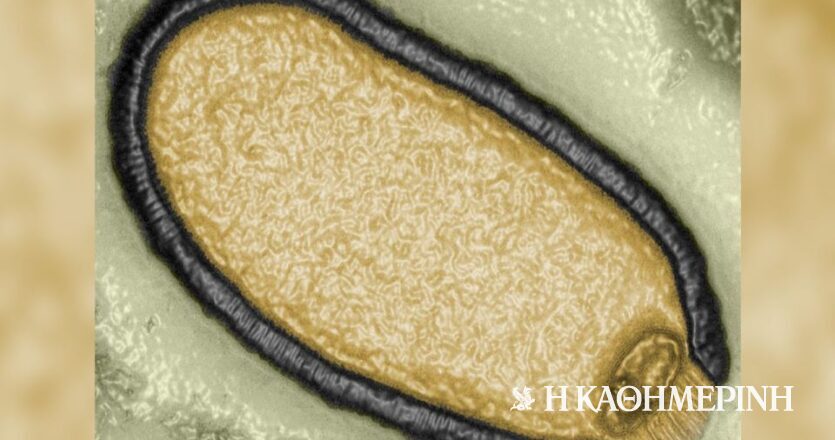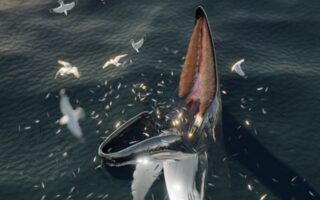
“Our reasoning is that if amoeba viruses are still alive, there is no reason why other viruses cannot be alive and able to infect their hosts.” — Source: Jean-Michel Clavery/IGS/CNRS-AMU
increasingly high temperatures in North Pole It will likely cause the permafrost to “thaw”. Disable viruses Which, though dormant for thousands of years, can endanger human and animal health.
Although the possibility of a pandemic caused by a disease from the distant past sounds like a far-fetched plot from a science fiction movie, scientists warn that the risk, while low, is underestimated.
Chemical and radioactive waste dating back to the Cold War that has the potential to seriously harm wildlife and local ecosystems can also be released in the process of “thawing” frozen subsoil.
“There’s a lot going on in the permafrost that’s concerning, and it really shows why it’s important to keep as much of the permafrost frozen as possible,” notes Kimberly Miner, a climate scientist at NASA’s Jet Propulsion Laboratory at Caltech in California. . Pasadena, California.

Permafrost soil, sediment, or rock covers one-fifth of the northern hemisphere, forming the basis for arctic tundra and boreal forests in Alaska, Canada, and Russia for thousands of years. works as one chronocapsule types Which preserves – in addition to ancient viruses – the remains of extinct animals – which scientists were able to locate and study.
The reason permafrost makes such a good storage medium isn’t just because of the cold: It’s a an oxygen-free environment Where no light penetrates. Today, however, temperatures in the Arctic are rising four times faster than in the rest of the planet, thinning the region’s top layer of permafrost.
To better understand the risks posed by frozen viruses, Jean-Michel Clavery, professor emeritus of medicine and genomics at the Aix-Marseille University School of Medicine in Marseille, examined soil samples collected from the Siberian permafrost to see whether viral particles present in them were present. remain contagious. He’s looking for “zombie viruses,” as he calls them, and has already managed to find some.
Virus catcher
Clavery studies a particular type of virus that he discovered in 2002. They are known as giant viruses, which are much larger than the normal type and can be seen through a conventional microscope, rather than a powerful electron microscope, which makes them a good model for such laboratory studies.
His efforts to find viruses preserved in permafrost were inspired in part by a team of Russian scientists who, in 2012, brought a wildflower back to life from the tissue of a 30,000-year-old seed found in a squirrel burrow.
In 2014, he was able to revive a virus he and his team had isolated from permafrost by inserting it into cultured cells and creating it. re-infection For the first time in 30,000 years. For safety reasons, he chose to study a virus that could only be applied to single-celled amoebae, not animals or humans.

He repeated this scientific work in 2015, isolating a different type of virus, and targeting amoebae again.
in his last life Research published February 18 in the journal VirusesClaverie and colleagues isolated different strains of an ancient virus from multiple samples collected from seven different Siberian permafrost regions, showing that each It can infect cultured amoeba cells.
These latest strains represent five new viral families, in addition to the two previously revived families. The oldest of them was ca 48,500 years, as derived from radiometric dating of soils, came from a soil sample collected in an underground lake, 16 meters below the Earth’s surface. The most recent specimens found in the stomach and fur of the woolly mammoth were 27,000 years.
That viruses are infectious after tens of thousands of years is indicative of the existence of one Potentially a bigger problemClavery warns. He expressed his fear that the world would take his research as mere scientific curiosity, and not realize the possibility of bringing ancient viruses back to life, which would pose a serious threat to public health.
“We consider these viruses that infect amoebae as surrogates for all the other possible viruses that might be present in the permafrost,” he says.
“We see traces of many, many, many other viruses. So we know it’s there. We don’t know for sure that they’re still alive. But our reasoning is that if amoeba viruses are still alive, there’s no reason why other viruses shouldn’t be. alive and able to infect their hostshe adds.
Not all viruses are harmful.
Of course, as the scientists point out, they don’t know in practice how long these viruses can remain infectious once exposed to today’s conditions, or how likely they are to encounter a suitable host.
Not all viruses are pathogens that can cause disease. some are benign, even useful to their hosts. And despite being home to about 3.6 million people, the Arctic is still sparsely populated, so the risk of human exposure to ancient viruses is extremely low.
However, “the risks are sure to increase in the context of global warming, so the melting of permafrost will continue to accelerate, and therefore more and more people will settle in the Arctic for industrial projects,” Clavery warns.
Source: CNN
⇒ News of the day
follow her kathimerini.gr on Google News And be the first to know all the news
Find out the latest news from Greece and the world on kathimerini.gr

“Avid problem solver. Extreme social media junkie. Beer buff. Coffee guru. Internet geek. Travel ninja.”





More Stories
Top 20 Most Played Games in June 2024
Play Age of Mythology: Retold Playtest starting today!
Impressive Maniskin Concert in Greece